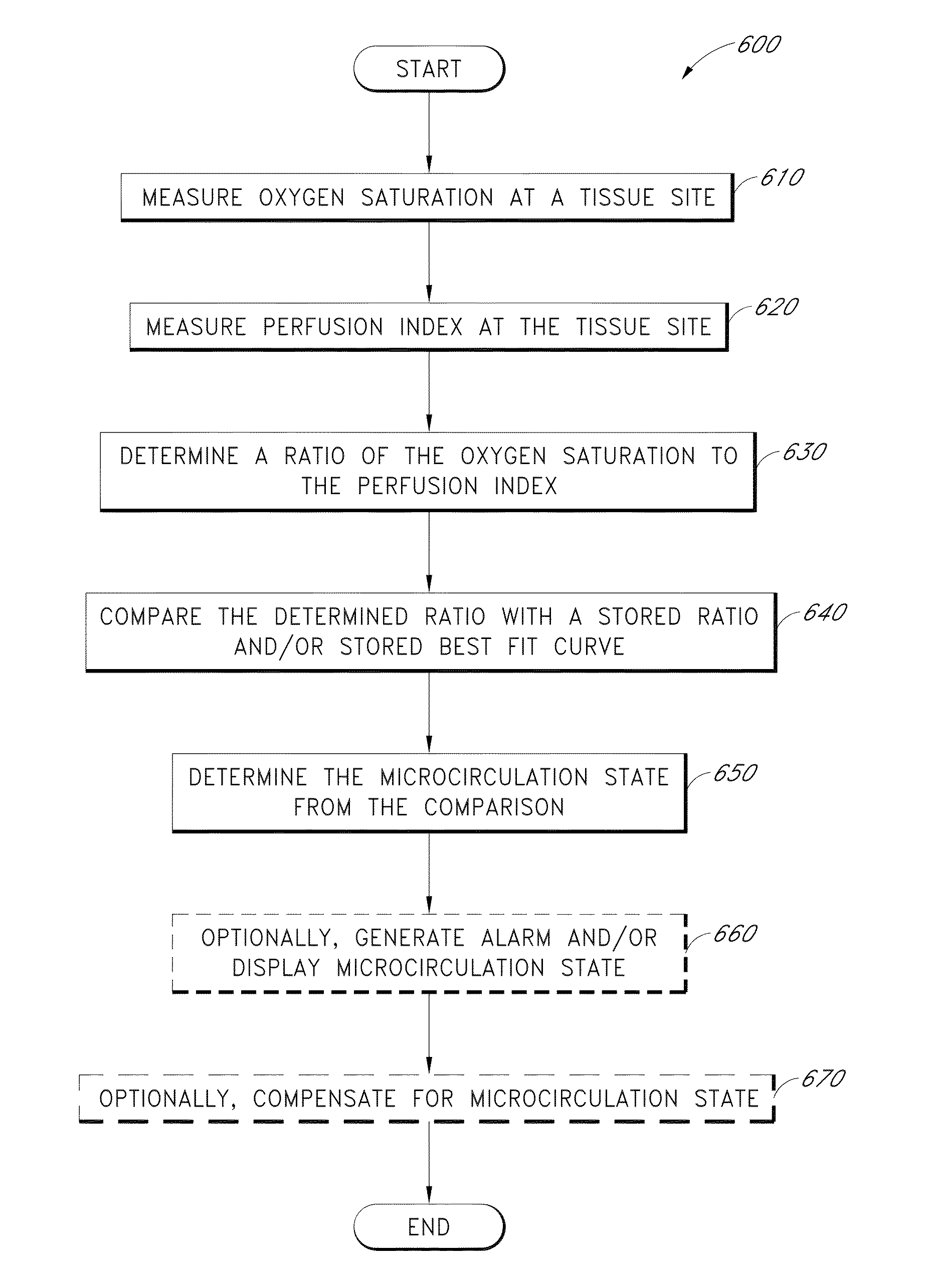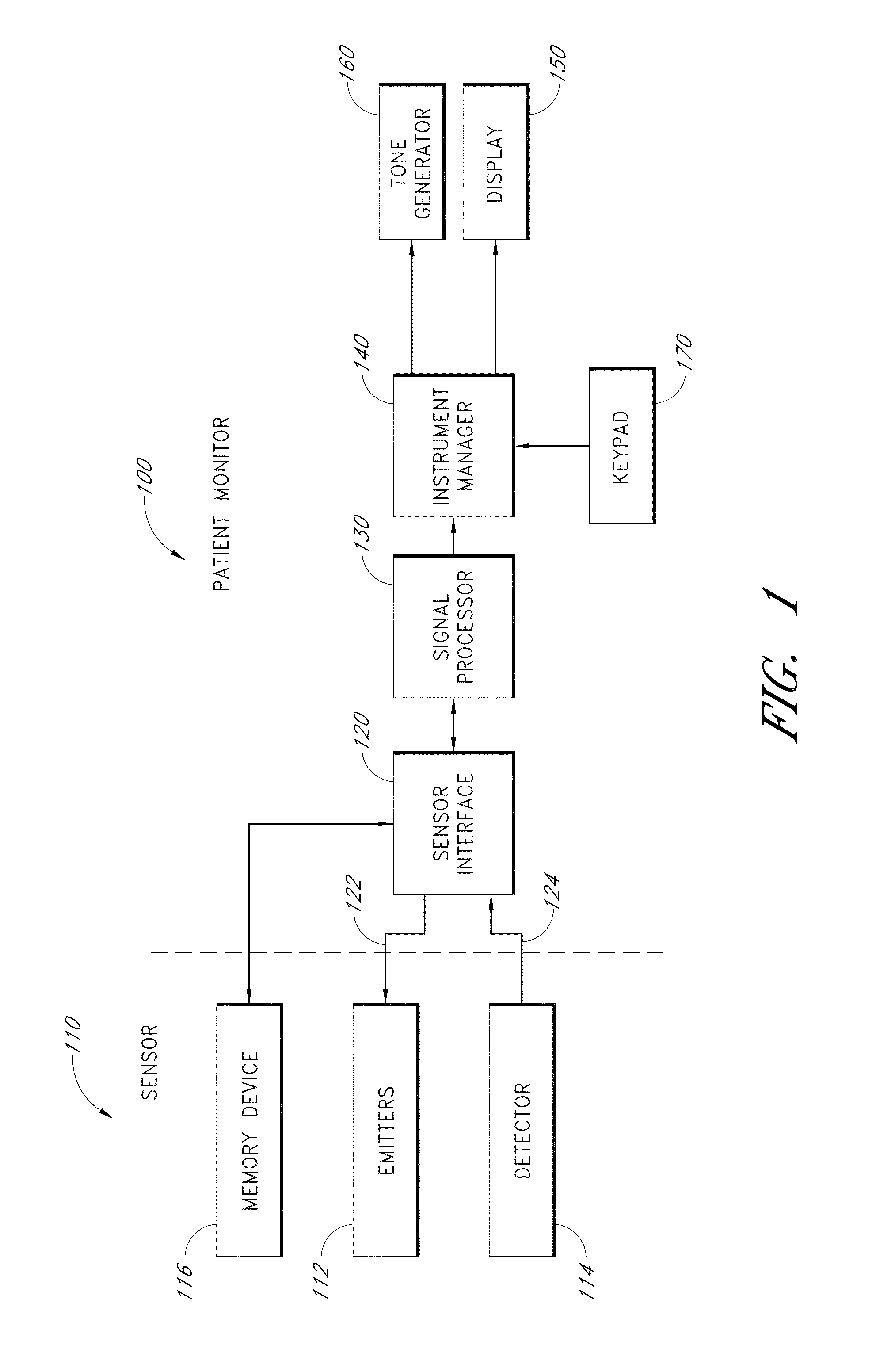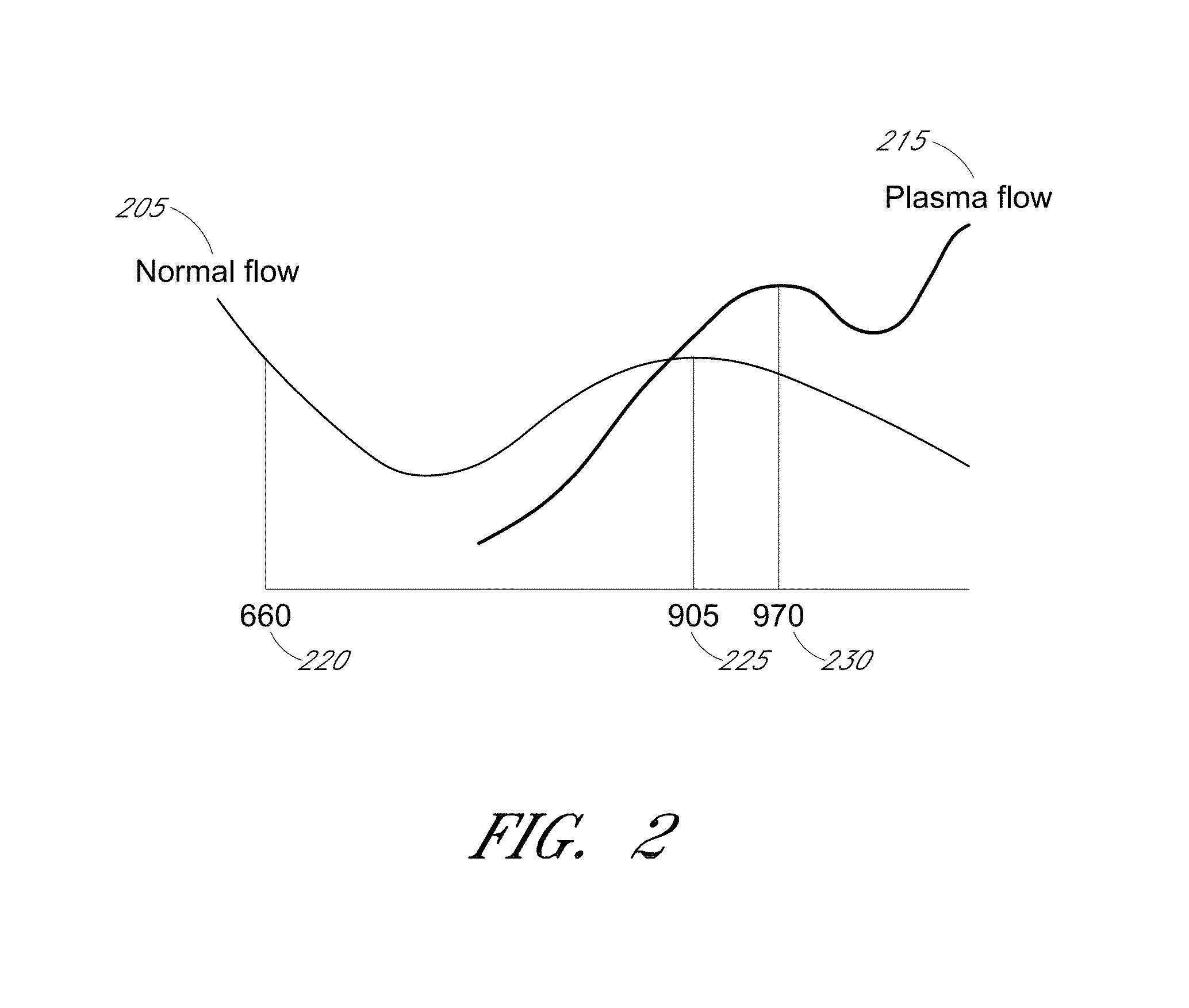Patient monitor for determining microcirculation state
- Summary
- Abstract
- Description
- Claims
- Application Information
AI Technical Summary
Benefits of technology
Problems solved by technology
Method used
Image
Examples
Embodiment Construction
[0016]FIG. 1 illustrates a block diagram of a patient monitor 100, such as a pulse oximeter, and associated sensor 110. Generally, in the case of a pulse oximeter, the sensor 110 has LED emitters 112, generally one at a red wavelength and one at an infrared wavelength, and a photodiode detector 114. The sensor 110 is generally attached to an adult patient's finger or an infant patient's foot. For a finger, the sensor 110 is configured so that the emitters 112 project light through the fingernail and through the blood vessels and capillaries underneath. The LED emitters 112 are activated by drive signals 122 from the pulse oximeter 100. The detector 114 is positioned at the fingertip opposite the fingernail so as to detect the LED emitted light as it emerges from the finger tissues. The photodiode generated signal 124 is relayed by a cable to the pulse oximeter 100.
[0017]A pulse oximeter 100 determines oxygen saturation (402) by computing the differential absorption by arterial blood...
PUM
 Login to View More
Login to View More Abstract
Description
Claims
Application Information
 Login to View More
Login to View More - R&D
- Intellectual Property
- Life Sciences
- Materials
- Tech Scout
- Unparalleled Data Quality
- Higher Quality Content
- 60% Fewer Hallucinations
Browse by: Latest US Patents, China's latest patents, Technical Efficacy Thesaurus, Application Domain, Technology Topic, Popular Technical Reports.
© 2025 PatSnap. All rights reserved.Legal|Privacy policy|Modern Slavery Act Transparency Statement|Sitemap|About US| Contact US: help@patsnap.com



